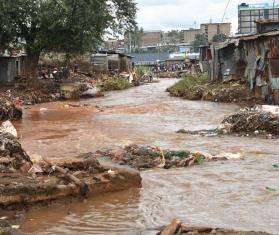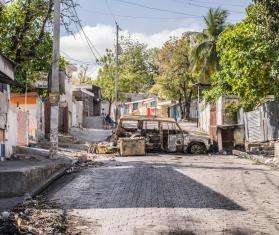Barcelona/New York June 10, 2014 – Several rapid diagnostic tests that do not require laboratory confirmation have proven highly reliable in detecting Chagas disease, a breakthrough that could place more people on treatment much sooner, according to a study released today by the international medical humanitarian organization Doctors Without Borders/Médecins Sans Frontières (MSF) and the World Health Organization (WHO).
The results of the study, published in the Journal of Clinical Microbiology, mark a turning point in the fight against Chagas. Six out of 11 rapid diagnostic tests currently available for Chagas proved highly reliable, meaning medical professionals can now diagnose patients without utilizing laboratory facilities, eliminating one of the existing barriers to scaling up Chagas treatment in endemic and non-endemic areas.
“It is revolutionary,” said Laurence Flevaud, MSF’s laboratory advisor and the study coordinator. “We can no longer say we don’t have rapid tests to diagnose Chagas, and therefore there is no longer an excuse for not treating affected people. According to the results, the tests work well worldwide, from Japan to America, passing through Europe. We have shattered the myths about the diagnosis of Chagas.”
The study results are based on an analysis of 474 samples of serum—previously tested for the Triponosoma cruzi infection with conventional tests—in 11 national referral laboratories in Argentina, Brazil, Colombia, Costa Rica, Mexico, the US, Spain, France, and Japan since 2010. The study showed no significant geographically-based differences in performance.
With no independent studies showing the reliability of available rapid diagnostic tests, the WHO has recommended diagnosing Chagas using two conventional lab tests, and using a third test in case of discrepancy. This requires a well-equipped lab and skilled staff. For patients, it means providing a blood sample and having to wait weeks for definitive test results.
“Thanks to this study we carried out together with the WHO Chagas Working Group, the recommendation could change in the coming months,” said Flevaud. “Yet from now on, national Chagas programs can improve a lot in terms of Chagas diagnosis and treatment.”
In 2010, the World Health Assembly approved the Chagas Disease: Control and Elimination resolution, advocating for integrating diagnosis and treatment to primary health care for patients in the acute and chronic phases. However, the need to have referral laboratories to confirm the diagnosis of patients was a barrier to this integration.
The rapid diagnostic tests have been assessed underlab conditions. Results from a second-phase study—to determine their reliability in the field in various countries—are expected to be available by the end of this year. From these results, the best test or combined tests, depending on the region, will be determined.
Chagas disease kills 12,000 people every year and between seven and eight million people are estimated to be infected with the disease. It is one of the main public health hazards in Latin America. In recent decades, cases have also been detected in North America, Europe and the Asia-Pacific area, particularly as a result of population movements.
The results of the study “Comparative evaluation of 11 commercialized Diagnostic Tests for detecting Tryponosoma cruzi antibodies in serum banks in endemic andnon-endemic areas” have been published in the Journal of Clinical Microbiology.
http://jcm.asm.org/content/early/2014/05/02/JCM.00144-14.abstract





